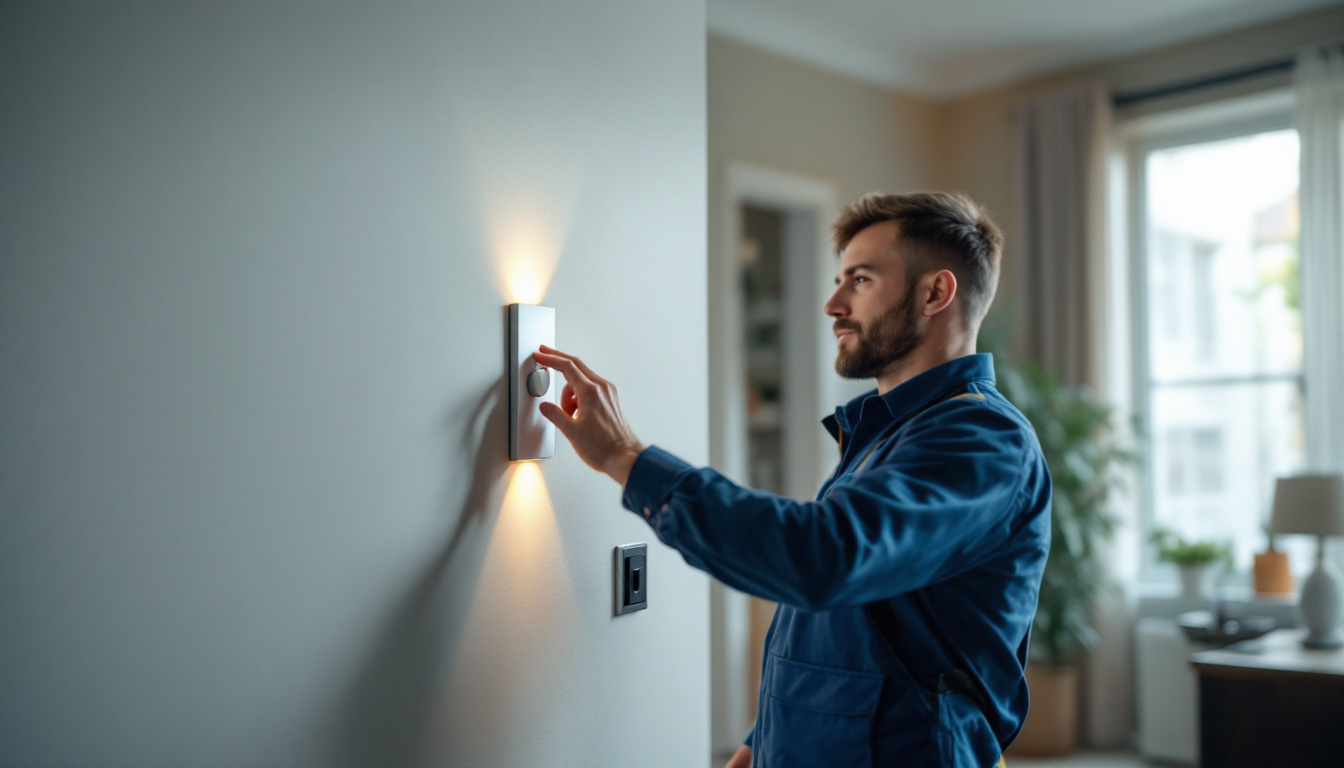
In the world of lighting installation, the goof ring is a small yet crucial component that can significantly impact the quality and safety of a project. Understanding how to effectively use goof rings can save time, money, and headaches. This guide aims to illuminate the common pitfalls associated with goof rings and provide practical solutions for lighting contractors.
Before diving into the potential pitfalls, it’s essential to grasp what a goof ring is and its purpose in lighting installations. A goof ring, also known as a trim ring or a ceiling ring, is typically used to cover up any misalignments or imperfections in the cutout of drywall or ceilings where recessed lighting fixtures are installed.
The primary function of a goof ring is to provide a clean, finished look to the installation. It conceals any gaps or uneven edges that may occur during the installation process. This not only enhances the aesthetic appeal but also ensures that the fixture is securely mounted and insulated from dust and debris. Additionally, a goof ring can help to improve the overall energy efficiency of the lighting installation by minimizing air leaks that could lead to increased heating or cooling costs.
Goof rings come in various sizes and materials, including plastic and metal. The choice of material can affect durability, appearance, and compatibility with different lighting fixtures. Understanding the types available can help contractors choose the right one for each project. For instance, plastic goof rings are often lighter and easier to install, making them a popular choice for residential applications, while metal goof rings may be preferred in commercial settings due to their robustness and ability to withstand more wear and tear.
Moreover, goof rings are available in different finishes, such as matte, glossy, or textured, allowing for customization that can complement the overall design of a space. Some manufacturers even offer goof rings in various colors, enabling them to blend seamlessly with the ceiling or to stand out as a design feature. This versatility not only caters to aesthetic preferences but also allows for creative lighting designs that can enhance the ambiance of a room.
While goof rings can be incredibly beneficial, there are several common mistakes that lighting contractors should be aware of. Avoiding these pitfalls can lead to a more efficient installation process and a higher quality end product.
One of the most frequent mistakes is selecting a goof ring that does not match the size of the cutout. Using a ring that is too small can leave gaps that are unsightly and may compromise the installation. Conversely, a ring that is too large may not fit securely, leading to instability.
To avoid this issue, it’s crucial to measure the cutout accurately before selecting a goof ring. Always keep a variety of sizes on hand to accommodate different situations, ensuring a perfect fit every time. Additionally, it might be helpful to use templates or guides during the installation process to ensure that the measurements are precise. This extra step can save time and resources, preventing the need for rework later on.
Another common pitfall is failing to ensure proper adhesion between the goof ring and the ceiling material. If the goof ring is not securely attached, it can become loose over time, leading to potential safety hazards.
Using the right adhesive or screws is vital. Contractors should also ensure that the surface is clean and free of dust or debris before applying the goof ring. This will promote better adhesion and a longer-lasting installation. Furthermore, considering environmental factors such as humidity and temperature can influence the choice of adhesive. For instance, using a high-strength adhesive designed for varying conditions can further enhance the durability of the installation, ensuring that the goof ring remains firmly in place for years to come.
A goof ring is not just a functional component; it also plays a significant role in the overall aesthetics of the lighting installation. Choosing a ring that does not match the style or color of the fixture or ceiling can detract from the visual appeal.
Contractors should consider the design elements of the space and select goof rings that complement the overall decor. This attention to detail can elevate the quality of the installation and leave a lasting impression on clients. Additionally, exploring different finishes and textures can add an extra layer of sophistication to the installation. For example, a matte finish may work well in a modern setting, while a polished chrome ring could enhance a more traditional decor. By carefully selecting the right goof ring, contractors can create a seamless integration of lighting fixtures that not only illuminates the space but also enhances its overall design aesthetic.
To ensure successful goof ring installation, lighting contractors should adopt best practices that enhance both functionality and aesthetics. Implementing these strategies can streamline the installation process and improve overall project outcomes.
Before starting the installation, thorough planning is essential. This includes assessing the project site, understanding the client’s needs, and determining the appropriate goof ring sizes. A well-thought-out plan can help prevent common mistakes and ensure a smoother installation process.
Additionally, contractors should familiarize themselves with the specific requirements of the lighting fixtures being installed. This knowledge will guide them in selecting the right goof rings and installation techniques. It is also beneficial to create a checklist that outlines all necessary materials and tools, which can help keep the project organized and on schedule. Engaging with the client during this phase can also provide insights into their preferences regarding aesthetics and functionality, ensuring that the final installation meets their expectations.
Having the right tools on hand can make a significant difference in the installation process. Essential tools for goof ring installation include a measuring tape, level, drill, and appropriate fasteners. Using high-quality tools can enhance precision and efficiency.
Moreover, investing in specialized tools designed for recessed lighting installations can further streamline the process. These tools can help ensure that cuts are clean and accurate, reducing the likelihood of needing goof rings in the first place. Additionally, having a well-organized tool kit can save time during installation, allowing contractors to quickly access the tools they need without unnecessary delays. Consideration should also be given to safety equipment, such as goggles and gloves, to protect against potential hazards during the installation process.
Continuous training and skill development are vital for lighting contractors. Staying updated on the latest installation techniques, tools, and materials can improve the quality of work and reduce the likelihood of errors.
Participating in workshops, seminars, or online courses can provide valuable insights and enhance expertise. This investment in knowledge not only benefits the contractor but also leads to higher satisfaction for clients. Additionally, networking with other professionals in the industry can lead to the exchange of ideas and innovative practices that can be applied to future projects. Mentorship opportunities can also be advantageous, allowing less experienced contractors to learn directly from seasoned experts, further enhancing the overall skill level within the field.
As the lighting industry evolves, so do the challenges associated with goof ring installations. Embracing innovative solutions can help contractors navigate these challenges more effectively.
One innovative solution is the use of adjustable goof rings. These rings can be resized to fit various cutout dimensions, providing flexibility and reducing the need for multiple sizes on hand. This adaptability can save time and resources during installations.
Adjustable goof rings are particularly beneficial in renovation projects where existing cutouts may not conform to standard sizes. They allow contractors to achieve a professional finish without extensive modifications to the ceiling.
Another trend in the industry is the development of integrated lighting solutions that combine the fixture and goof ring into a single unit. These products simplify the installation process and eliminate the need for separate goof rings, reducing potential installation errors.
Integrated solutions also enhance the aesthetic appeal, as they provide a seamless look that can elevate the overall design of the space. Contractors should consider these options when planning new installations or renovations.
Clients often have specific expectations regarding the quality and appearance of lighting installations. Addressing their concerns about goof rings and overall installation quality is essential for building trust and ensuring satisfaction.
Many clients may not understand the role of goof rings in the installation process. Taking the time to educate them about their purpose and benefits can help alleviate concerns. Explaining how goof rings contribute to the overall quality and safety of the installation can enhance client confidence.
Additionally, showcasing examples of previous installations can demonstrate the value of using goof rings effectively. This transparency can foster a collaborative relationship between the contractor and client.
When presenting proposals to clients, including detailed information about the materials and methods to be used, including goof rings. A comprehensive proposal can help clients understand the steps involved in the installation process and the rationale behind each decision.
By outlining the benefits of using high-quality goof rings and other materials, contractors can justify their choices and reinforce the value of their services.
Goof rings may seem like a minor detail in the grand scheme of lighting installation, but their significance cannot be overstated. By understanding the common pitfalls and implementing best practices, lighting contractors can enhance the quality of their work and ensure client satisfaction.
Embracing innovative solutions and addressing client concerns will further elevate the professionalism of the installation process. Ultimately, a well-executed goof ring installation can contribute to the overall success of lighting projects, ensuring a lasting impression on clients and a reputation for excellence in the industry.
Ready to avoid the common pitfalls of goof ring installation and deliver excellence in your lighting projects? At LumenWholesale, we provide lighting contractors with top-quality, spec-grade goof rings and lighting products at unbeatable wholesale prices. Our extensive selection is designed to meet the highest industry standards, ensuring you get reliable, high-performance lighting every time. Plus, with free shipping on bulk orders, you can stock up on the best lighting solutions without worrying about hidden fees. Elevate your lighting installations with the perfect blend of quality, affordability, and convenience. Discover wholesale lighting at the best value today and make a lasting impression on your clients.

Discover how sodium bulbs can revolutionize your lighting projects and elevate your contracting business.

Discover the essential guide for lighting contractors on selecting the perfect dimmer switches.

Discover the insider secrets of lighting contractors with our comprehensive guide on Bay Lighting.

Discover how under cab LED lights can transform your space with innovative lighting designs.